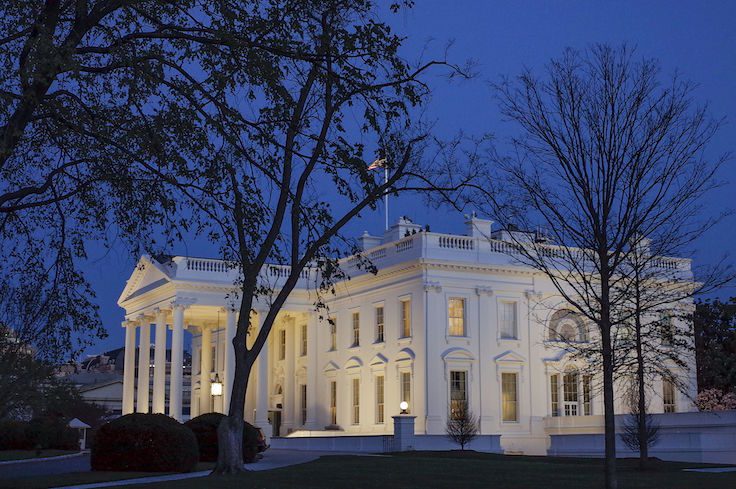Since President Donald Trump took office, the media have spilled oceans of ink on the conflicts coming from inside his White House. While his first year had notable ideological splits among staffers and a high turnover, such internecine conflict is far from new, as shown in Tevi Troy's latest book Fight House: Rivalries in the White House from Truman to Trump.
The book traces infighting among staffers in the modern presidency, looking at administrations from Harry Truman to Trump. The modern White House staff started under Truman's predecessor, Franklin Delano Roosevelt, as the federal government expanded greatly under his New Deal policies. The Reorganization Act of 1939 created the Executive Office of the President, which, since then, has expanded to an operation of more than 1,600 staffers that has generated many prominent careers in the process.
Roosevelt's White House was no stranger to conflict either. The new agencies and governmental authorities lent themselves to conflict and the president himself "designed his whole theory of management on conflict," according to White House aide Stephen Hess.
Presidents Truman and Dwight D. Eisenhower ran more tightly controlled operations and got much of their advice from cabinet members, which minimized rivalries.
But even Truman's White House had plenty of conflict, with a notable example coming from the decision to recognize Israel. Secretary of State George Marshall, who came to that position with an already sterling résumé that included standing up the military to fight in World War II, was dead set against recognition—arguing it would only anger nearby Arabs who would likely destroy the new state in a war.
But counterarguments were put forward by special counsel Clark Clifford: He worried about the hotly contested Jewish vote in New York and the emerging Cold War with the Soviet Union in which Israel could be made an ally. Clifford won the day, but at a meeting just before recognition was announced, Marshall went so far as to say he would vote against Truman in the next election for that decision.
The role of the White House staff was cemented in the 1960s under Presidents John F. Kennedy and Lyndon Johnson, who made policymaking a White House prerogative. The most famous staff battle from that time was between JFK's brother—Attorney General Robert F. Kennedy—and Johnson himself.
While ostensibly outranking the attorney general as vice president, Johnson lacked the fraternal relationship and access enjoyed by Robert Kennedy. That pattern of personal relationships beating out professional ones crops up repeatedly in Troy's accounting, whether it's Ivanka Trump and Jared Kushner in the current administration, or adviser and close friend to the Obamas Valerie Jarret in the previous one.
RFK and Johnson clashed in the area where their authorities overlapped—especially civil rights. Their conflict included its share of colorful nicknames, with Johnson dismissing the Kennedy crowd as "the Harvards" and Bobby's wife Ethel calling Johnson "Huckleberry Capone."
Troy points to the shifting power dynamics between the two men as a major reason for their conflict. At the start of their relationship, RFK was a lowly Senate staffer while Johnson ran the place. In JFK's White House, Bobby's relationship with the president gave him the upper hand, but his brother's assassination shifted the dynamic in LBJ's favor.
Much of the conflict highlighted in the book centers on foreign policy, which is not an accident, Troy argues. "Compromising on domestic policy can mean splitting the dollars spent on a program or moderating the impact of a proposed rule or bill," he writes. "But issues in the national security realm are often binary. There is no real compromise between 'invade Iraq' and 'don't invade Iraq.'"
Under President Richard Nixon, foreign policy was dominated by the national security adviser, Henry Kissinger, who overwhelmed Secretary of State William Rogers. However, Rogers had some advantages in the fight, such as a longstanding friendship going back to their days in the Eisenhower administration.
But Kissinger was very smart and ambitious, and he used his relative proximity to the president to win over his trust. Kissinger positioned himself as the lynchpin in Nixon's foreign policy to the point where Rogers was largely cut out of one of Nixon's biggest foreign policy moves—reopening relationships with China.
Kissinger, for instance, faked an illness while in Pakistan to secretly fly to China to discuss opening relations. When the event took place, Rogers was left out of a key meeting between Mao and Nixon that the White House adviser attended.
Foreign policy battles dominated the infighting during the administration in which Troy himself served as deputy assistant and then acting assistant for domestic policy—that of George W. Bush. The big split then was between Vice President Dick Cheney and Secretary of Defense Donald Rumsfeld on the one side and Secretary of State Colin Powell on the other.
Powell was much more wary of going to war with Iraq than Cheney and Rumsfeld. The dispute did not play out directly, but rather through a series of media leaks from Powell and questioning memos issued by Rumsfeld.
Yet some of the more entertaining parts of the book have less to do with grand policy disputes and more with the personal nature of the fighting. President Bill Clinton's liberal adviser George Stephanopoulos called the triangulating Dick Morris "a small sausage of a man" as part of their dispute over the general direction of that presidency.
In George W. Bush's White House, Deputy Attorney General James Comey was dismissively referred to as "Saint Jim" by opponents. President Barack Obama's first chief of staff, Rahm Emmanuel, used to call foreign policy adviser Ben Rhodes "Hamas" for the latter's position on the Israel-Palestine conflict.
Ultimately, some level of conflict can work well for a president. The amount in a specific administration often has to do with the president's own preference, Troy writes. Conflict can help flesh out successful policies just as much as it can help to a sink a flailing administration.
